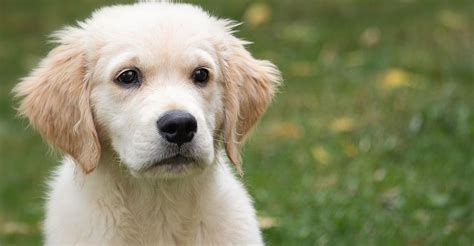
A quick snapshot of your stove before heading out on vacation can offer significant peace of mind, serving as a crucial double-check against potential fire hazards and offering a valuable reference in case of emergencies. This simple practice, advocated by safety experts, provides a visual confirmation that burners are off, knobs are in the correct position, and nothing flammable is left unattended on or near the stovetop.
Taking a photograph acts as a final, verifiable step in your pre-vacation checklist, providing reassurance and potentially mitigating risks associated with leaving appliances unattended for extended periods. According to safety professionals, a stove left on—even at a low setting—or with flammable items nearby can quickly escalate into a dangerous situation.
“It’s a great way to just have peace of mind before you leave the house,” says Liz Priestley, a home safety expert. The practice has gained traction among homeowners seeking an extra layer of security, especially those with gas stoves, which can leak if knobs are inadvertently bumped.
The Power of a Pre-Vacation Photo
The concept is straightforward: before locking your door for vacation, take a moment to photograph your stove. This simple act provides several benefits:
-
Visual Confirmation: The photo serves as a definitive visual record of the stove’s state upon your departure. It allows you to double-check that all burners are off, knobs are correctly positioned, and no combustible materials are nearby.
-
Reduced Anxiety: By having photographic proof, you can alleviate the nagging worry that you might have left the stove on. This can significantly reduce anxiety and allow you to enjoy your vacation without constant concern.
-
Remote Verification: If a neighbor or house sitter needs to enter your home while you’re away, the photo can be shared with them to verify the stove’s status. This is especially helpful if there’s a suspicion of a gas leak or other potential hazard.
-
Insurance Purposes: In the unlikely event of a fire, the photo could potentially serve as supporting documentation for insurance claims, demonstrating that you took reasonable precautions before leaving your home.
Why Stoves Pose a Significant Risk
Stoves are a leading cause of residential fires. According to the National Fire Protection Association (NFPA), cooking equipment is the primary cause of home fires and home fire injuries. Unattended cooking is a major contributing factor.
Gas stoves present an additional risk due to the potential for gas leaks. Even a small leak can accumulate and create a fire or explosion hazard. Carbon monoxide poisoning is also a concern associated with gas stoves.
Electric stoves, while not posing a gas leak risk, can still ignite flammable materials left on or near the burners. Radiant heat from an electric stovetop can easily ignite paper towels, dishcloths, or even food packaging.
Beyond the Stove: Extending the Photo Checklist
While the stove is a primary focus, the “photo checklist” approach can be extended to other appliances and potential hazards in your home:
-
Oven: Similar to the stove, ensure the oven is off and clear of any food or debris.
-
Toaster Oven/Microwave: Check that these appliances are unplugged or switched off and free of any food remnants.
-
Hair Straighteners/Curling Irons: These devices can reach high temperatures and pose a fire risk if left unattended. Ensure they are unplugged and cooled down.
-
Space Heaters: Never leave space heaters running unattended. Ensure they are switched off and unplugged before leaving.
-
Water Heater: While generally safe, it’s a good idea to check for any signs of leaks or malfunctions before leaving for an extended period.
-
Main Water Valve: Consider turning off the main water valve to prevent potential water damage from leaks or burst pipes while you’re away.
-
Electrical Panel: Ensure all circuit breakers are functioning correctly and that no circuits are overloaded.
Digital Tools for Home Safety
In addition to taking photos, several digital tools can enhance home safety and provide remote monitoring:
-
Smart Home Security Systems: These systems offer features such as remote monitoring, motion detection, and door/window sensors. Some systems also include smoke and carbon monoxide detectors with remote alerts.
-
Smart Plugs: These devices allow you to remotely control appliances and lights. You can use them to turn off appliances you may have forgotten or to create the illusion that someone is home.
-
Security Cameras: Install security cameras inside and outside your home to monitor activity while you’re away. Many cameras offer motion detection and night vision capabilities.
-
Smart Smoke Detectors: These detectors send alerts to your smartphone if smoke or carbon monoxide is detected. Some models can even pinpoint the location of the hazard within your home.
The Psychology of Peace of Mind
The act of taking a photo, beyond its practical benefits, can also have a significant psychological impact. It provides a sense of control and reduces anxiety by offering concrete evidence that you’ve taken steps to ensure your home’s safety.
“It’s a way to take control of a situation that can often feel overwhelming,” explains Dr. Sarah Thompson, a psychologist specializing in anxiety management. “The photo serves as a tangible reminder that you’ve done everything you can to mitigate potential risks.”
Community Response and Expert Opinions
The “stove photo” practice has resonated with many homeowners, who share their experiences and tips on social media and online forums. Many express gratitude for the simple yet effective tip, noting that it has significantly reduced their pre-vacation stress.
Fire safety experts also endorse the practice as a valuable addition to pre-vacation checklists. They emphasize that while it’s not a substitute for proper safety measures, it serves as a crucial final check and can help prevent potentially devastating incidents.
“It’s a small thing that can make a big difference,” says Fire Chief Michael Davies. “We encourage homeowners to take every precaution possible to ensure their safety and the safety of their homes.”
The Importance of Pre-Vacation Planning
Taking a photo of your stove is just one aspect of comprehensive pre-vacation planning. A thorough checklist should include:
-
Unplugging Appliances: Unplug electronic devices and appliances to conserve energy and prevent potential electrical fires.
-
Adjusting Thermostat: Set your thermostat to a moderate temperature to conserve energy and prevent pipes from freezing in cold weather.
-
Securing Windows and Doors: Ensure all windows and doors are locked and that your security system is activated.
-
Stopping Mail and Newspapers: Prevent mail and newspaper buildup, which can signal that your home is unoccupied.
-
Informing Neighbors: Let trusted neighbors know that you’ll be away and provide them with contact information in case of emergencies.
-
Arranging Pet Care: If you have pets, make arrangements for their care, whether it’s hiring a pet sitter or boarding them at a kennel.
-
Preparing Your Home for Weather: Take steps to protect your home from potential weather-related damage, such as clearing gutters and securing outdoor furniture.
Developing a Consistent Habit
The key to maximizing the benefits of the “stove photo” practice is to make it a consistent habit. Integrate it into your pre-vacation checklist and perform it every time you leave your home for an extended period.
Consider creating a physical checklist that you can refer to each time you travel. This will help ensure that you don’t forget any important steps and that you’re consistently taking precautions to protect your home.
The Future of Home Safety
As technology advances, home safety is becoming increasingly sophisticated. Smart home devices and remote monitoring systems are providing homeowners with unprecedented levels of control and awareness.
The “stove photo” practice, while simple, represents a proactive approach to home safety that can be easily adopted by anyone. It’s a reminder that even small actions can have a significant impact on preventing accidents and protecting your property.
A Call to Action
Before your next vacation, take a moment to photograph your stove and other potential hazards in your home. It’s a small investment of time that can provide significant peace of mind and potentially prevent a devastating incident.
Share this tip with your friends, family, and neighbors to help promote home safety and create a safer community for everyone.
By taking proactive steps to protect our homes, we can enjoy our vacations with greater peace of mind and return to our properties knowing that we’ve done everything we can to prevent accidents and ensure our safety.
Addressing Common Concerns
Some individuals may express concerns about the privacy implications of taking photos of their home. However, the photos are intended for personal use and are not shared with anyone unless there’s a specific need, such as verifying the stove’s status with a neighbor or house sitter.
Others may question the effectiveness of the practice, arguing that it’s unnecessary or that they’re already careful about turning off appliances. However, even the most diligent individuals can make mistakes, and the photo serves as a valuable double-check.
Ultimately, the “stove photo” practice is a simple, low-cost way to enhance home safety and reduce anxiety. It’s a proactive measure that can provide significant peace of mind and potentially prevent a devastating incident.
FAQ: Stove Photo and Vacation Safety
-
Why is it recommended to take a photo of my stove before going on vacation?
- Taking a photo provides visual confirmation that all burners are off, knobs are correctly positioned, and there are no flammable materials on or near the stovetop. This reduces anxiety and serves as a reference in case of emergencies. As Liz Priestley, a home safety expert, notes, “It’s a great way to just have peace of mind before you leave the house.” The photo acts as a final check to prevent potential fire hazards caused by accidentally leaving the stove on or having combustible items nearby.
-
What other appliances or areas should I photograph before leaving for vacation?
- Beyond the stove, consider photographing your oven, toaster oven/microwave, hair straighteners/curling irons, space heaters, water heater, and electrical panel. These areas can pose potential fire or water damage risks if left unchecked. Ensuring these are turned off, unplugged, or in safe condition offers comprehensive peace of mind. Additionally, consider photographing the main water valve after turning it off to prevent potential water damage.
-
How can a pre-vacation photo be helpful in the event of a house fire?
- In the unlikely event of a fire, the photo can serve as supporting documentation for insurance claims, demonstrating that you took reasonable precautions before leaving your home. It provides evidence that you made an effort to ensure the stove and surrounding area were safe before your departure, potentially streamlining the claims process.
-
Are there any digital tools or smart home devices that can help improve home safety while I’m on vacation?
- Yes, several digital tools can enhance home safety. Smart home security systems offer remote monitoring and motion detection. Smart plugs allow remote control of appliances. Security cameras provide visual surveillance. Smart smoke detectors send alerts to your smartphone if smoke or carbon monoxide is detected. These technologies offer an added layer of protection and real-time updates on your home’s status while you are away.
-
I’m already very careful about turning off appliances. Is taking a photo really necessary?
- While being careful is essential, even the most diligent individuals can make mistakes or overlook something. The photo serves as a valuable double-check, providing a visual record of the stove’s status upon departure. It’s a simple, low-cost way to enhance home safety and reduce anxiety, offering peace of mind that you’ve taken every possible precaution to prevent accidents. As Fire Chief Michael Davies suggests, “It’s a small thing that can make a big difference. We encourage homeowners to take every precaution possible to ensure their safety and the safety of their homes.”
The Rising Trend of Preventative Home Safety Measures
The “stove photo” trend underscores a broader movement towards preventative home safety measures. As homeowners become increasingly aware of potential hazards and the availability of simple solutions, they are actively seeking ways to mitigate risks and protect their properties.
This trend is fueled by several factors:
-
Increased Awareness: Media coverage of home fires and other accidents raises awareness of potential hazards and the importance of preventative measures.
-
Accessibility of Information: Online resources and social media platforms provide homeowners with easy access to information and tips on home safety.
-
Affordable Technology: The availability of affordable smart home devices and security systems makes it easier for homeowners to monitor their properties and prevent accidents.
-
Desire for Peace of Mind: Many homeowners are willing to invest in preventative measures to reduce anxiety and enjoy greater peace of mind while they’re away from home.
Expanding the Scope of Home Safety Education
While the “stove photo” tip is a valuable addition to home safety education, it’s important to expand the scope of education to cover other potential hazards and preventative measures. This includes:
-
Fire Safety: Educating homeowners on fire prevention techniques, such as installing smoke detectors, having a fire extinguisher, and practicing escape plans.
-
Water Damage Prevention: Providing tips on preventing water damage from leaks, burst pipes, and flooding, such as turning off the main water valve when leaving for vacation and maintaining plumbing systems.
-
Electrical Safety: Educating homeowners on electrical safety hazards, such as overloaded circuits, frayed wires, and improper use of extension cords.
-
Carbon Monoxide Safety: Raising awareness of the dangers of carbon monoxide poisoning and the importance of installing carbon monoxide detectors.
-
Home Security: Providing tips on securing homes against burglary and theft, such as installing security systems, locking doors and windows, and maintaining landscaping.
Collaborative Efforts for Enhanced Home Safety
Enhancing home safety requires collaborative efforts from various stakeholders, including:
-
Government Agencies: Developing and enforcing building codes and safety regulations.
-
Fire Departments: Providing fire safety education and conducting home safety inspections.
-
Insurance Companies: Offering incentives for homeowners to implement safety measures.
-
Home Improvement Retailers: Providing homeowners with access to safety products and resources.
-
Community Organizations: Conducting home safety workshops and providing outreach programs.
By working together, these stakeholders can create a safer community for everyone.
The Future of the “Stove Photo” Practice
As technology continues to evolve, the “stove photo” practice may eventually be replaced by more sophisticated solutions. For example, smart stoves with built-in sensors could automatically detect if a burner is left on and send an alert to the homeowner’s smartphone.
However, the underlying principle of the practice – taking a proactive step to ensure home safety – will remain relevant. Regardless of the technology used, the key is to develop a consistent habit of checking for potential hazards before leaving home and taking steps to mitigate risks.
The “stove photo” practice serves as a valuable reminder that even small actions can have a significant impact on preventing accidents and protecting our properties. It’s a simple, effective way to enhance home safety and enjoy greater peace of mind while we’re away.
Legal Considerations and Liabilities
While the “stove photo” offers a proactive safety measure, it’s crucial to understand its limitations concerning legal liabilities. Taking a photo doesn’t absolve homeowners of their responsibility to maintain a safe environment.
-
Negligence: If a fire or other incident occurs due to negligence (e.g., faulty wiring, ignoring known hazards), the photo won’t protect homeowners from liability. It merely documents the state of the stove at a specific moment.
-
Insurance Claims: While helpful, the photo doesn’t guarantee a successful insurance claim. Insurers will investigate the cause of the incident and assess responsibility based on various factors.
-
Rental Agreements: Tenants should consult their rental agreements to understand their responsibilities regarding appliance safety. Some leases may outline specific requirements for appliance usage and maintenance.
-
Product Liability: If a faulty appliance causes the incident, the manufacturer may be liable. The photo can help establish the condition of the appliance before the event, potentially strengthening a product liability claim.
The Ethical Dimensions of Home Safety
Home safety extends beyond personal responsibility; it has ethical dimensions that impact communities.
-
Duty of Care: Homeowners have a duty of care to ensure their property doesn’t pose a risk to neighbors. Neglecting safety precautions can have devastating consequences for surrounding properties.
-
Transparency: Sharing safety information with neighbors promotes a culture of collective responsibility. Open communication about potential hazards fosters a safer community.
-
Accessibility: Ensuring safety measures are accessible to all members of the community, regardless of income or ability, promotes social equity.
-
Environmental Responsibility: Promoting energy-efficient appliances and practices contributes to environmental sustainability, reducing the risk of climate-related disasters.
Long-Term Impact on Home Insurance Policies
The widespread adoption of preventative measures like the “stove photo” could potentially influence home insurance policies in the long run.
-
Reduced Premiums: Insurers may offer discounts to homeowners who actively implement safety measures, recognizing the reduced risk of incidents.
-
Incentives: Insurance companies could provide incentives, such as free safety inspections or smart home devices, to encourage preventative practices.
-
Data Analysis: Insurers could use data from smart home devices to assess risk and tailor policies to individual homeowner needs.
-
Claims Process: The claims process may become more streamlined, with insurers relying on data from smart home devices and photos to expedite investigations.
Addressing the Skepticism and Misconceptions
Despite its benefits, the “stove photo” concept may encounter skepticism and misconceptions.
-
“It’s Unnecessary”: Some may argue that it’s an overreaction. However, accidents happen, and the photo provides a valuable safety net.
-
“It’s an Invasion of Privacy”: Concerns about privacy are valid. Emphasize that the photos are for personal use only and are not shared without consent.
-
“It Won’t Prevent Anything”: While it can’t guarantee complete prevention, it significantly reduces the risk by promoting awareness and providing a visual reminder.
-
“Technology Will Replace It”: Technology is evolving, but the fundamental principle of proactive safety remains crucial.
Addressing these concerns with clear explanations and evidence-based information can promote wider adoption of the practice.
Promoting Cultural Shifts in Home Safety Practices
Ultimately, enhancing home safety requires a cultural shift towards proactive prevention. This involves:
-
Early Education: Integrating safety education into school curricula and community programs.
-
Community Engagement: Fostering neighborhood initiatives that promote safety awareness and mutual support.
-
Media Campaigns: Utilizing media platforms to disseminate safety information and promote responsible practices.
-
Role Modeling: Encouraging influential figures and community leaders to champion safety measures.
By fostering a culture of safety, we can create a safer and more secure environment for everyone.









